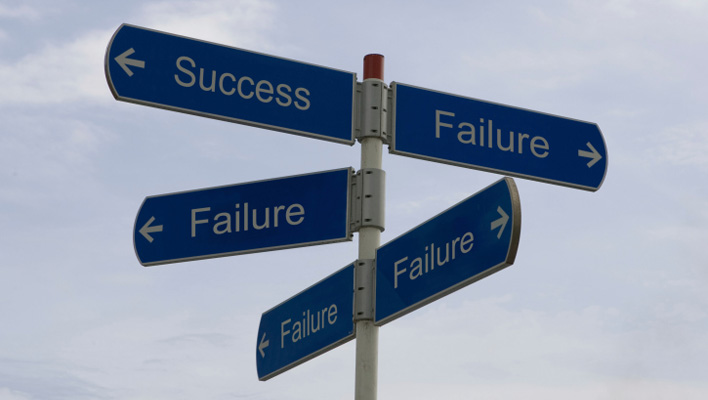For many business leaders, answering the question “when should we change course?” is one of the toughest they face. How long do you stay the course, and under what conditions do you decide to change? The “right” answer, the one that studies correlate with the best performance, is “very rarely.” Surprised? You and most other leaders may be, so if you are, consider yourself in good company!
First, I want to be clear that I am talking about strategy, high-level directional concepts and operating principles that link to long-term success. If you have ever worked with or for an entrepreneur, you know that most innovative thinkers are constantly looking for and are receptive to new ideas. One of the challenges I hear a lot from the leadership teams I work with is “we can’t keep the boss focused long enough to get anything done!” Would your team say that?
Jim Collins latest book, Great by Choice, talks about how long-term industry leaders and top-performing companies stay the course—on strategy and key operating principles. In fact, he shares that fewer than 20 percent of those directional tenets changed for these profiled companies over 30 years.
So why do I hear things like “the world is changing so fast, we can’t even do strategic planning” or “things aren’t working out so we need to change strategy/direction/people”? The next shiny thing that everyone is talking about is hard to ignore. Who wants to feel out of it? Yet, chasing the shiny thing or saying we can’t run our businesses strategically in ANY environment is not leadership. It is indecision.
Strategy is hard because it forces a choice. We must choose the one concept that we think will give our companies the best advantage, drive us to achieve high performance and motivate and leverage the skills of the people that work with us and for us. As leaders, we have NO CHOICE but to provide that direction for those who count on us.
A well-researched and thoughtfully adopted strategy will need to be updated from time to time but rarely changed. Hallmark Cards Inc., my first employer and a company I continue to feel connected to, is facing the NEED to change. The market demands it. Printed products are not being purchased in retail stores; they are replaced by e-greetings and gifts ordered online. Is it time to change? Of course. In fact, it’s way overdue. But what needs to change? Consumer needs haven’t changed, their brand equity is strong, but the solutions consumers seek are different. Is it a fad or a trend? A trend, right? It isn’t going back to the way it was. Change is a mandate. Yet, they have so much to build on. Their future may still be very bright.
For MOST companies, the reason they are in business and even their competitive advantage don’t need to change. What needs to change is how they do business—what they sell, where they sell and how they sell it. The same is true for Blockbuster, which was put out of business in four years by Netflix—the basic needs weren’t changing, the method of meeting them was. Blockbuster just didn’t understand how quickly things were changing and didn’t respond quickly enough.
Chances are good that your basic strategy is still right, but the execution needs to change. The problem is that most organizations confuse strategy with tactics. Have you ever referred to the company’s strategies, plural? Strategy is the single overarching concept that directs the company. Vision is the role you want your company to have in its markets in the future; mission is the purpose for which the company is founded. Get those right, and they last a lifetime. How the company delivers on them—the strategic initiatives or key programs—will change more often.
So how do you know when to change? When the market demands it. One must be able to base the decision on market necessity and, to do that, must have market facts—not impressions or antidotes. One must distinguish between what one knows and what one thinks. And finally, one must triangulate data points to look for confirmation of conclusive market shifts. It is less important to be the first to respond; it is more important to respond effectively. Take the time to examine the decision. But don’t wait too long, like Blockbuster did. Track the key trends but also the rate of change.
If you would like more information; check out this article on what strategic leaders do. Or check out our minibuk Series, Master Breakthrough Growth, for more tips on effective strategic leadership. And as always, I would love to hear your thoughts!


